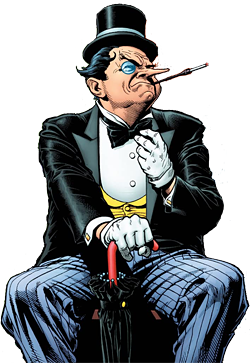
The Penguin is a supervillain appearing in American comic books published by DC Comics, commonly as an adversary of the superhero Batman. The character made his first appearance in Detective Comics #58 and was created by Bob Kane and Bill Finger. The Penguin is one of Batman's most enduring enemies and belongs to the collective of adversaries that make up Batman's rogues gallery.

Man-Bat is a fictional character appearing in American comic books published by DC Comics. Introduced in Detective Comics #400 as an enemy of the superhero Batman, the character belongs to the collective of adversaries that make up his rogues gallery. Originally portrayed as a supervillain, later incarnations show the Man-Bat as a sympathetic villain or antihero.

The Mad Hatter is a supervillain appearing in comic books published by DC Comics, commonly as an adversary of the superhero Batman. He is modeled after the Hatter from Lewis Carroll's novel Alice's Adventures in Wonderland, a character often called the "Mad Hatter" in adaptations of Carroll. A scientist who invents and uses technological mind control devices to influence and manipulate the minds of his victims, the Mad Hatter is one of Batman's most enduring enemies and belongs to the collective of adversaries that make up Batman's rogues gallery.
Talia al Ghul is a fictional character appearing in American comic books published by DC Comics, commonly in association with Batman. The character was created by writer Dennis O'Neil and artist Bob Brown, and first appeared in Detective Comics #411. Talia is most commonly known as being the daughter of the supervillain Ra's al Ghul as well as the on-and-off lover of the superhero Batman and the mother of their son Damian Wayne who was born during a brief marriage. Over the years, she has alternately been depicted as an anti-heroine who is constantly torn between being an ally and an enemy of Batman due to her loyalty to both him and her environmentalist father, with whom she shares the same vision when it comes to saving the planet and nature, but not the means he uses to achieve that goal.

"Legends" was a comic book crossover story line that ran through a six-issue, self-titled limited series and various other titles published by DC Comics in 1986 and 1987. Each of the individual crossover/tie-in issues had a Legends Chapter # header added to their trade dress.
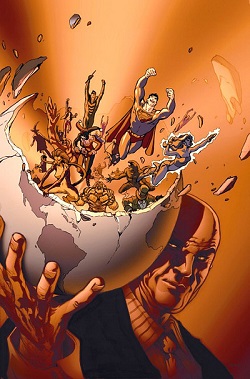
Secret Society of Super Villains (SSoSV) is a DC Comics title that debuted in May–June 1976. The series presented a group of DC's supervillains, mostly foes of the Justice League of America. The series was cancelled with issue #15 in July 1978, as part of the DC Implosion, a period when DC suddenly cancelled dozens of comics.

Ernesto Chan, born and sometimes credited as Ernie Chua, was a Filipino-American comics artist, known for work published by Marvel Comics and DC Comics, including many Marvel issues of series featuring Conan the Barbarian. Chan also had a long tenure on Batman and Detective Comics. Other than his work on Batman, Chan primarily focused on non-superhero characters, staying mostly in the genres of horror, war, and sword and sorcery.
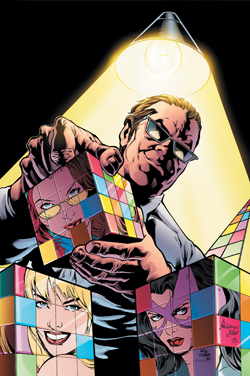
Calculator is a supervillain appearing in American comic books published by DC Comics. Originally introduced as an enemy of the Atom, the character was later redeveloped in the 2000s as a master information broker, hacker, and tactical supervisor to other supervillains, and foil to Batman's partner Oracle.
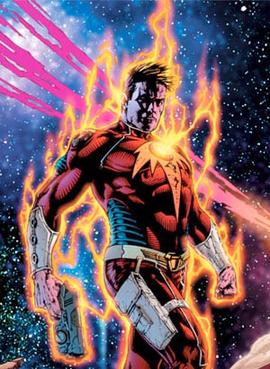
Captain Comet is a superhero appearing in American Comic Books published by DC Comics, created by editor Julius Schwartz, writer John Broome, and artist Carmine Infantino.

Michael E. Uslan is an American lawyer and film producer. Uslan has also dabbled in writing and teaching, he is known for being the first instructor to teach an accredited course on comic book folklore at any university.

Doctor Death is a supervillain appearing in publications by DC Comics. The character was created by Gardner Fox and Bob Kane as an enemy of the superhero Batman, and first appeared in Detective Comics #29. He is notable as the first traditional supervillain to be encountered by the Batman, as well as his first recurring foe.
The "DC Explosion" and "DC Implosion" were two events in 1978 – the first an official marketing campaign, the second a sardonic reference to it – in which DC Comics expanded their roster of publications, then abruptly cut it back. The DC Explosion was part of an ongoing initiative at DC to regain market share by increasing the number of titles they published, while also increasing page counts and cover prices. The so-called "DC Implosion" was the result of the publisher experiencing losses that year due to a confluence of factors, and cancelling a large number of ongoing and planned series in response. The cancellations included long-running series such as Our Fighting Forces, Showcase, and House of Secrets; new series introduced as part of the expansion such as Firestorm and Steel: The Indestructible Man; and announced series such as The Vixen which would have been the company's first title starring an African-American woman. Former flagship series Detective Comics was also considered for cancellation. Some of the material already produced for these cancelled series was used in other publications. Several of the completed stories were "published" in small quantities as two issues of Cancelled Comics Cavalcade, whose title was a reference to DC's Golden-Age Comic Cavalcade series.

Quakemaster is a fictional supervillain in the DC Comics universe. He first appeared in DC Special #28 and was co-created by writer Bob Rozakis and artist John Calnan.
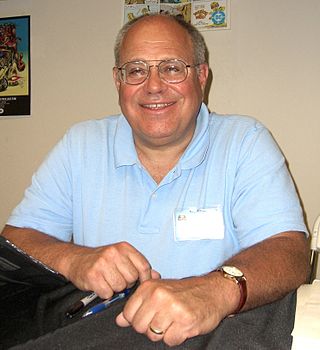
Robert "Bob" Rozakis is an American comic book writer and editor known mainly for his work in the 1970s and 1980s at DC Comics, as the writer of 'Mazing Man and in his capacity as DC's "Answer Man".

Cavalier is a fictional supervillain appearing in American comic books published by DC Comics.

"Batman and Son" is a 2006 comic book story arc featuring the DC Comics character Batman. Written by Grant Morrison and drawn by Andy Kubert, the story was published in four parts in the comic book Batman starting in #655 and ending in #658. The story was the beginning of Morrison's run in the Batman comic as well as their long-term take on the character of Batman through multiple titles over the next seven years. The arc introduced Batman's son, Damian Wayne, bringing him into the mainstream continuity of the DC Universe.
David Vern Reed, was an American writer, best known for his work on the Batman comic book during the 1950s in a run that included a revamp of the Batplane in Batman #61 and the introduction of Deadshot in Batman #59.
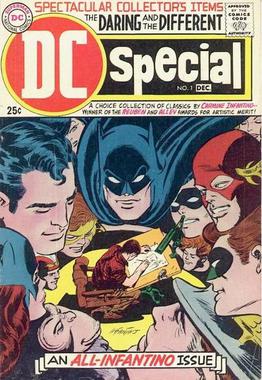
DC Special was a comic book anthology series published by DC Comics originally from 1968 to 1971; it resumed publication from 1975 to 1977. For the most part, DC Special was a theme-based reprint title, mostly focusing on stories from DC's Golden Age; at the end of its run it published a few original stories.

Robert Allen Smith, better known as Bob Smith, is an American comic book artist, notable as an inker with DC Comics and Archie Comics.















